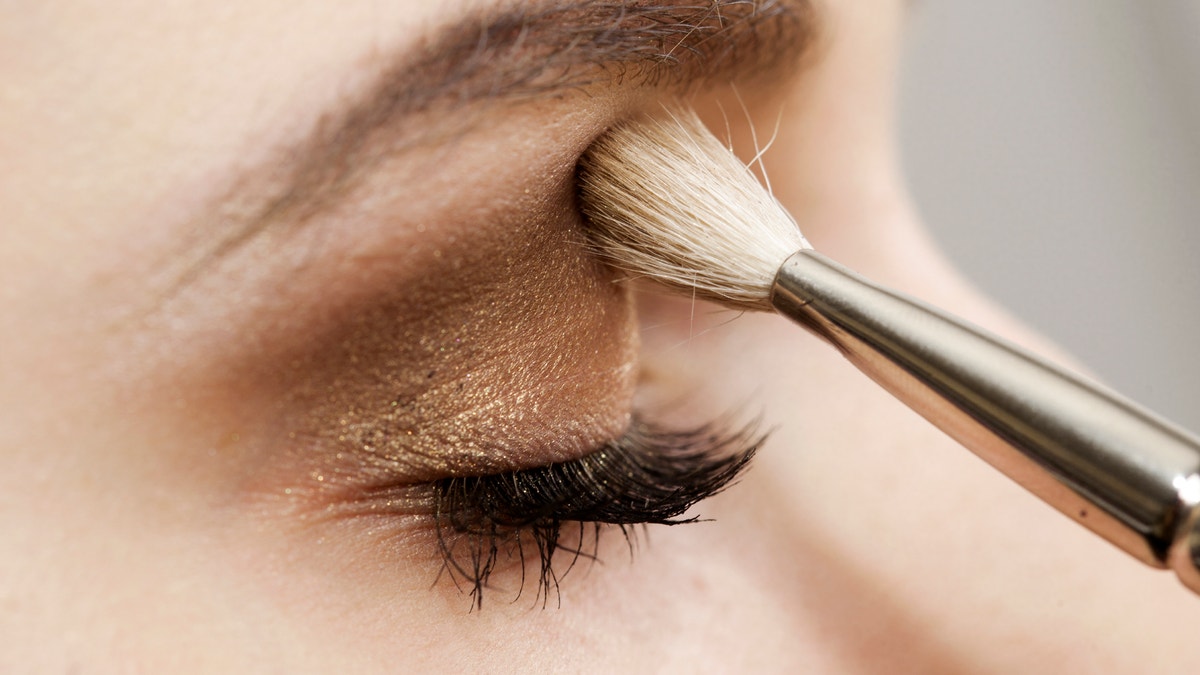
Makeup is supposed to make you look even more beautiful, but that beauty comes at a cost when you consider the toxic chemicals that are lurking in most brands of eye shadows, liners, mascaras, makeup brushes, eyelash curlers and false-lash adhesives.
Experts say using these chemicals can lead to red, scaly eyelids, blood-shot eyes, dry eye disease, and serious long-term health conditions.
What’s more, although more than 1,300 chemicals are banned from cosmetics in Europe, only 11 are in the U.S.
Here are for 10 chemicals to avoid and ways you can find better alternatives.
1. Carbon black
Carbon black is a powder found in eyeliner, mascara, eye shadow and eyebrow shadow and has been linked to cancer and organ system toxicity.
It will show up on the label as carbon black, D & C Black No. 2, acetylene black, channel black, furnace black, lamp black and thermal black.
2. Ethanolamine compounds
“The problem with ethanolamines is that they can be contaminated with cancer-causing chemicals called nitrosamines,” said Janet Nudelman, director of program and policy at the Breast Cancer Fund and director of the Campaign for Safe Cosmetics.
To spot ethanolamines, avoid products that contain ingredients with the letters DEA, TEA and MEA.
3. BAK
Benzalkonium chloride (BAK) is a preservative found in eyeliner, mascara and makeup remover. BAK is well documented to be toxic to the epithelial cells of the eyes. These cells keep dust, water and bacteria out of the eye and provide a smooth surface on the cornea to absorb and distribute oxygen and cell nutrients from tears to the rest of the cornea.
BAK can be listed under various names including benzalkonium chloride, quaternium-15 or guar hydroxypropyltrimonium chloride.
4. Prime yellow carnauba wax
Used in mascara and eyeliners to stiffen the product and make them waterproof, prime yellow carnauba wax clogs the oil glands in the eyes and can lead to dry eye disease, which affects 3.2 million women age 50 and older, according to the National Institutes of Health.
Using products that contain waxes isn’t a good idea, although Japan wax might be a safer alternative, said Dr. Leslie E. O'Dell, director of the Dry Eye Center of Pennsylvania in Mechanicsburg and Manchester.
5. Formaldehyde and formaldehyde-releasing preservatives
Formaldehyde and preservatives that release the chemical are strongly linked to allergic reactions and cancer. Formaldehyde can be listed as such on the label but it might also be listed as quaternium-15, DMDM hydantoin and urea.
6. Parabens
Parabens are preservatives that are used to prevent the growth of bacteria in makeup products, but they’re absorbed through the skin and easily transmitted into the bloodstream. They’re also endocrine disruptors and are linked to reproductive toxicity, early puberty and breast cancer. Parabens can also make dry eye worse since they prohibit the oil glands that line the eyelid from secreting enough oil, O’Dell said.
When reading labels, avoid anything with the suffix-paraben.
7. Aluminum powder
Used to give eye makeup its hue, aluminum powder is both a neurotoxin and has been linked to organ system toxicity. Makeup labels will list aluminum, LB Pigment 5 or pigment metal.
8. Retinyl acetate or retinyl palmitate
Two forms of vitamin A, retinyl acetate or retinyl palmitate, have been linked to cancer and reproductive toxicity. They’re also found in anti-aging face creams and eye creams.
Even if you don’t have dry eye disease, you should avoid vitamin A.
“There are well-documented studies that show that it will kill the oil glands and once they’re gone, you can’t rebuild them,” O’Dell said.
9. Heavy metals
Nickel and chrome are two heavy metals found in all types of makeup, especially in green or metallic shadows, as well as makeup brushes, even the expensive types, O’Dell said.
Heavy metals are neurotoxins that have been linked to brain damage. Nickel in particular has been associated with lung cancer and respiratory concerns. What’s more, up to 17 percent of women have a nickel allergy, which can cause dry, itchy eyelids, a red skin rash and watery blisters.
What’s problematic about these heavy metals is that because they’re often a contaminant of other products, they may not be listed on the label.
10. Titanium dioxide
Typically found in sunscreen, titanium dioxide is safe but when it’s in powder form, it can be problematic and is also a possible carcinogen. Titanium dioxide is labeled as such or as TiO2.
How to avoid chemicals in eye makeup:
Avoid waterproof.
Don’t use mascara and eyeliners labeled “waterproof” since they can lead to dry eye disease. If you’re using them because your eyes water a lot, it’s better to see your doctor first to figure out the cause.
Use coconut oil.
Coconut oil is gentle, natural and effective for removing eye makeup. Just put a bit on a cotton swab and wipe.
Read labels carefully.
When purchasing makeup, choose brands with the fewest ingredients possible. Just because a product is labeled “hypoallergenic” or “natural,” doesn’t mean it’s safe.
“There’s no legal definition of the word ‘natural;’ it’s a marketing claim,” Nudelman said.
What’s more, “organic” may only refer to the ingredients that are certified organic, not the entire product itself. And always avoid products that contain fragrance.
“One simple word can hide dozens and dozens of ingredients, some of which can be toxic,” Nudelman said.
Get an eye exam.
Whether you have symptoms or not, it’s always a good idea to see your doctor for an eye exam. Your doctor can detect issues before they become a bigger and give you a list of ingredients in makeup you should avoid.
Get an app.
It can take hours to read labels, compare products and find safe brands. Download an app like Good Guide, Think Dirty or the Environmental Working Group’s Healthy Living.




















